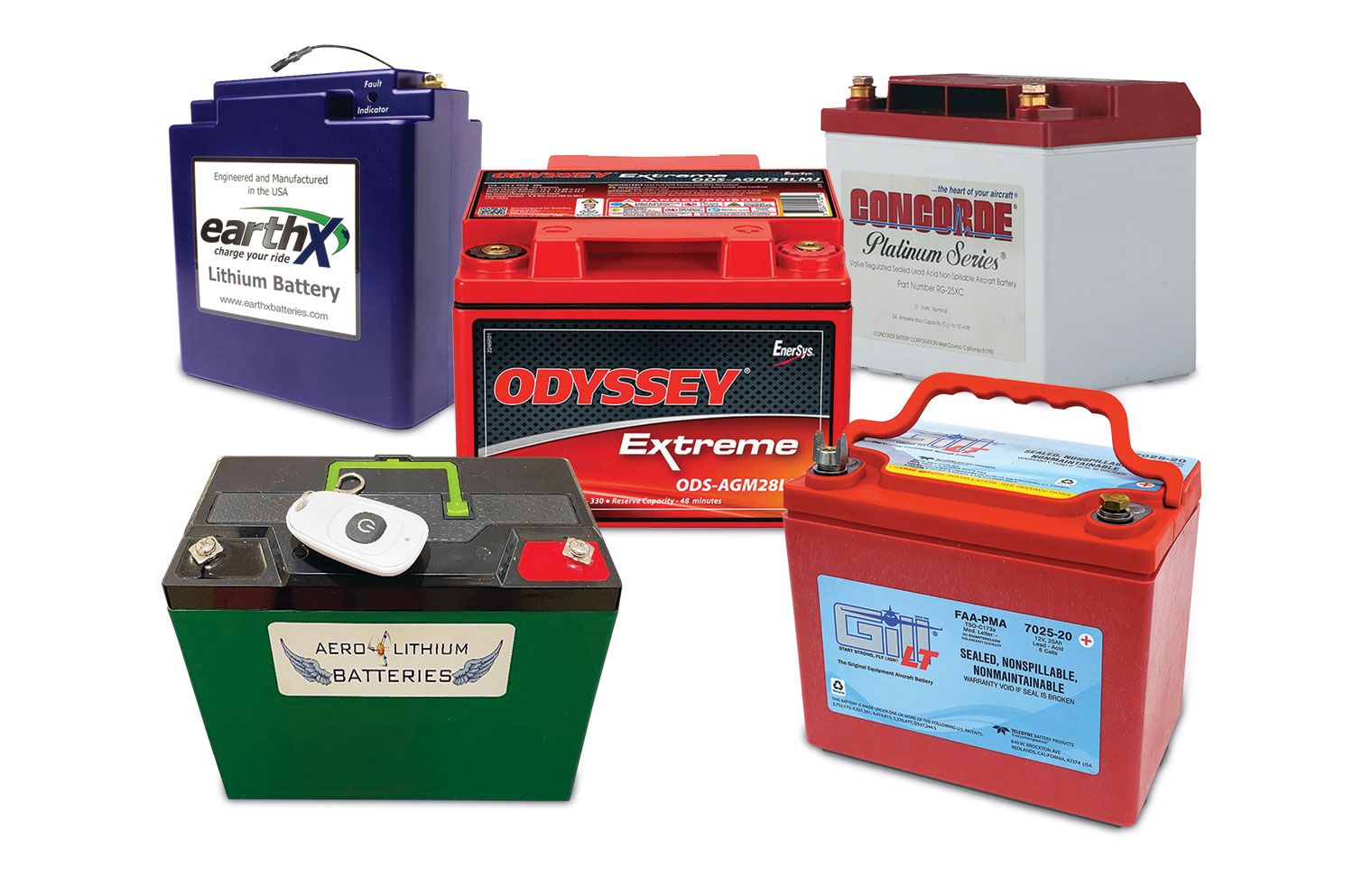 It isn’t much to ask. Cold starts, hot starts, flooded starts and starts away from home. We want a ship’s battery that boosts confidence. And since we’ll maintain it by connecting it to a smart battery tender when it’s parked (and maintain a healthy charging system), we expect it to last more than three years. Treated with kid gloves, our tendered motorcycle batteries last twice that long, even parking the bikes for long periods in New England’s harsh climate. The way we see it, the airplane’s battery should offer the same longevity.
It isn’t much to ask. Cold starts, hot starts, flooded starts and starts away from home. We want a ship’s battery that boosts confidence. And since we’ll maintain it by connecting it to a smart battery tender when it’s parked (and maintain a healthy charging system), we expect it to last more than three years. Treated with kid gloves, our tendered motorcycle batteries last twice that long, even parking the bikes for long periods in New England’s harsh climate. The way we see it, the airplane’s battery should offer the same longevity.
Based on our recent battery satisfaction survey, not surprisingly, there are some brands that do just that. Others disappoint. The main stats and a few words about our polling can be found below.
 First, LiFePO4—the latest lithium iron phosphate battery tech—is worth a review. It’s gaining momentum in a relatively slow-to-evolve market, and for those used to old-school battery tech, the latest lithium aircraft batteries confuse the buying decision.
First, LiFePO4—the latest lithium iron phosphate battery tech—is worth a review. It’s gaining momentum in a relatively slow-to-evolve market, and for those used to old-school battery tech, the latest lithium aircraft batteries confuse the buying decision.
LiFePO4 101
For ship’s power, think beyond the general wide-reaching term “lithium batteries,” because it’s actually lithium iron phosphate (LiFePO4 or LFP) batteries that suit typical piston engines. The batteries have four individually packaged 3.3-volt cells (eight cells for 24-volt systems) connected in series for a nominal voltage range between 12.8 and 14.4, compared to a traditional six-cell (2-volt-per-cell) lead acid battery. Since saving weight is a high priority for most kit builders, manufacturers boast that most models are nearly 80% lighter (that could be more than 10 pounds lighter) than typical lead acid and nickel cadmium cells. LFP batteries generally have a 4000-charge cycle life (versus 350 for a typical lead acid battery), they resist freezing and boiling over and they are flexible to install. Even mount one inverted, if you must—it won’t leak like an old-school flooded lead acid can.
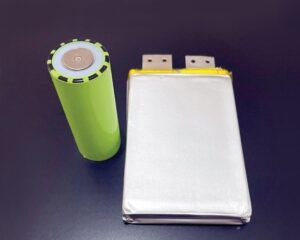
Good news if you park your aircraft in a harsh climate for longer periods: LFPs have a low self-discharge rate and a wider operating temperature range. And, when corrosion is a concern, an LFP won’t sulfate. It can sustain a higher starting voltage while the engine is cranking (always a good thing), plus the discharge voltage is constant. While lithium iron batteries have a fairly steep drop-off when discharged, consider that a healthy 12-volt LFP battery can provide full cranking voltage (and amperage) until it’s depleted. Worth mentioning is that while it varies among equipment, in a 14-volt electrical system most avionics will go dark below 11 volts of power input. Put a meter across a fully charged 12-volt EarthX ETX series battery and you’ll measure 13.3 volts.
The individual cell’s charge level will diverge with repeated charge/discharge cycles and age. This condition reduces the performance (capacity) of the battery. Essentially, the battery’s charge level is only as good as the charge level of the weakest cell.
A confusing (and loosely used) term that’s front and center in the LFP tech is BMS, for battery management system, and its primary task is monitoring the voltage of each cell. These are micro-controlled smart batteries, with internal circuitry that senses when a cell’s charge is greater than another, balancing them out so the charge level of all the cells is even. BMS protection is a necessity since LFPs are relatively intolerant to overvoltage and overdischarge conditions, although not all BMS protocols are the same.
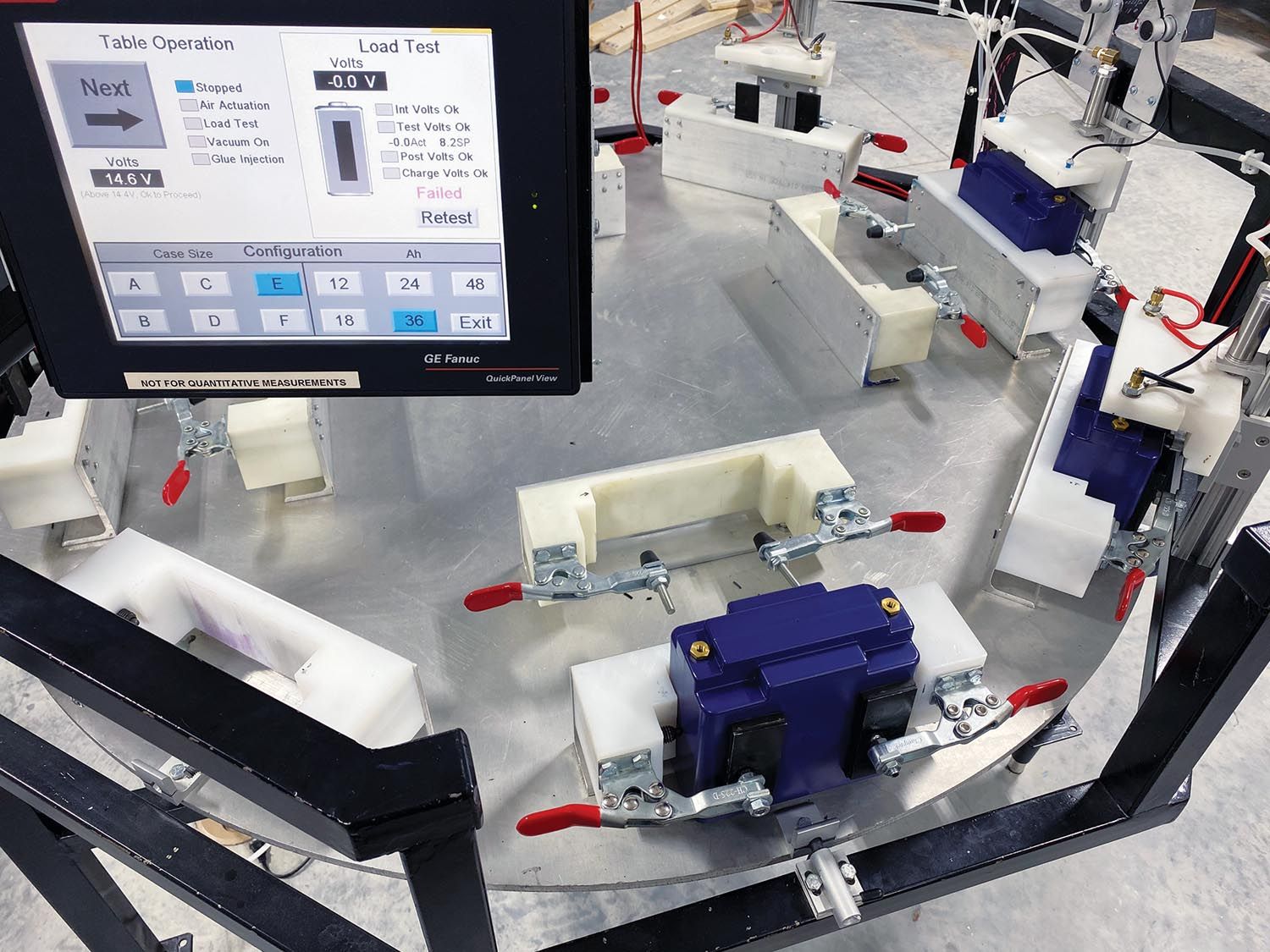
Using the EarthX BMS as another example, during an overdischarge condition, the BMS disconnects the battery from the load if it is drained to less than 5% of its remaining charge. On a 12-volt battery, that’s less than 10 volts. If the BMS disconnects the battery, the voltage reading of the battery will be zero. The BMS also has excessive cranking protection logic—current, temperature and time monitoring to limit high-current use (like during excessive engine cranking) to 10 to 30 seconds in any 60-second period.
There’s also short-circuit protection and some models use thermal runaway containment when the battery heats to around 518° F. If the battery terminals are shorted (or a low impedance load is connected across the terminals), which causes the battery volts to instantaneously tank to a low level, the battery will disconnect from the load to protect the cells and BMS circuitry from damage. If the BMS disconnects due to excessive cranking protection or short-circuit protection, the BMS will automatically reconnect after a cooldown period (typically around 3 minutes). The BMS is designed for short-circuit protection higher than an eye-widening 1000 amps.
An internal BMS circuit (like the one used in the EarthX line) is even smart enough to output a discrete signal to trigger a remote panel annunciator or warning on an EFIS display when there’s an issue with the battery’s charge status.
Speaking of issues, some batteries have a thermal runaway containment system, which generally includes a vent tube to move smoke and vapor outside of the cabin. For LFP batteries installed inside the passenger cabin, you’ll want a configuration with venting. EarthX considers this an essential safety feature. Aerolithium, for its parts, says its LFP batteries don’t require a vent tube when mounted inside the cabin.
By nature, lower-voltage LFP cell packs don’t flame, but instead make an impressive amount of electrolyte and smoke for several minutes. Over in the certificated aircraft world, venting and fault monitoring/display is a sharp focus of the TSO and STC process—probably for good reason.
EarthX Hundred Series
Colorado-based EarthX has roots deeply planted in the motorcycle/powersports market since the late 2000s. EarthX batteries ended up in Experimental aircraft even before the company focused on the market. But when company founder Reg Nicoson realized his lithium iron phosphate motorcycle batteries were going in aircraft, he went to work to improve on the design, with a sharp focus on safety. Today, EarthX works directly with a variety of aircraft OEMs, including Van’s, Sonex, Pipistrel, Glasair, Kitfox, Zenith, RANS, CubCrafters and Vashon.
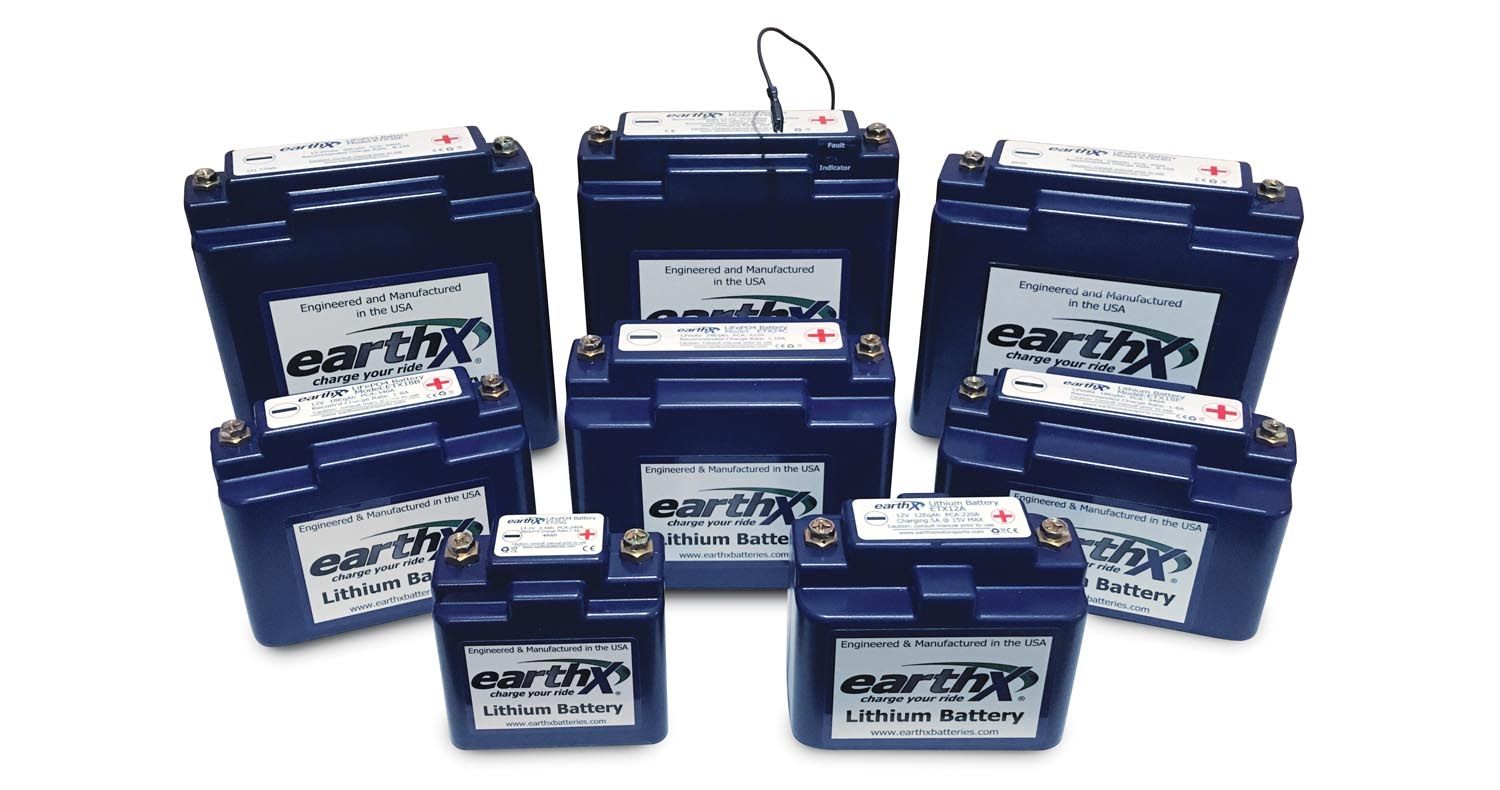
EarthX has a useful utility on its website that cross-references engine models to compatible battery models. EarthX’s marketing director, Kathy Nicoson, said that the $449 13.2-volt model ETX900 has become the most popular battery for most kits. It has 400 CCA (cold cranking amps) and 840 PCA (peak cranking amps) and it weighs 4.9 pounds. It’s 6.5×3.0x6.6 inches and has a 15.6 Ah (ampere hour) rating.
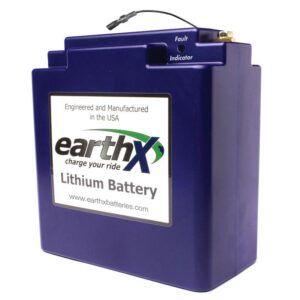
Another common model is the $379 13.2-volt ETX680 (and compact ETX680C, priced the same), rated at 320 CCA/680 PCA and 12.4 Ah and weighing 4.0 pounds. It’s the same dimensions as the ETX900, but the ETX680C is 5.9×3.4×4.5 inches. The ETX680 series is intended for use with 60-amp (and smaller) alternators.
The Hundred Series batteries have redundant internal circuitry and battery fault indicators on the chassis. For full-time fault monitoring, EarthX sells an optional panel-mounted fault indicator lamp for wiring to the battery’s discrete output interface—a single wire with a quarter-inch insulated female quick-connect terminal. You can also wire the battery into an EFIS display’s general-purpose discrete input. There’s also an RS-232 serial connection on some models.
Care and Feeding
EarthX says a fully charged battery can be kept in storage for up to one year without charging, and it should be disconnected if the aircraft will sit for longer than six months. To keep it healthy when it’s in service, the advice says not to crank the engine for more than 15 seconds within a 1-minute period, and to charge it annually.
EarthX says you can use a lead acid battery charger if it does not have a desulphation mode, which means it will pulse higher than 14.6 volts. The installation/maintenance manual mentions the Optimate model TM391 (6 amp) or TM275 (9.5 amp) chargers but any LiFePo4 charger is appropriate. If the battery has been overdischarged (and subsequently BMS-disconnected), the voltage at the battery terminal should be near zero volts if the battery still has a load on it. If the battery is disconnected from the load, it will automatically reconnect and the terminal voltage will return (remove the load by removing the positive or negative cables from the battery). In this case, simply connect the battery to a charger to restore charge (charge for 20–30 minutes), and then recheck the voltage. If the voltage is 13.2 volts (or 26.4 volts or greater for a 24-volt battery) and holding a charge, the battery should be OK and can be fully charged. If you are using the Optimate lithium charger, the charger should start charging in the Save mode. It may require several attempts. If the battery still will not charge, contact EarthX tech support—which should yield good results, in our opinion.
“It’s lightweight, works well and EarthX has great customer service,” said one survey respondent. “EarthX has an amazing product and great customer support. I replaced two Odyssey batteries with EarthX models and will never go back,” said another. Several respondents said they plan to switch to an EarthX model simply to save weight and because of positive feedback on forums.
But we fielded a sour report from one EarthX owner who wouldn’t buy another one for his E-LSA, saying he had two defective batteries and “I’ve been accused of neglecting the battery, but that’s not the case.” EarthX told us it works hard to support the customer, and it has the ability to extract stored trend data from the battery’s BMS when it comes back to the factory. Contact EarthX at www.earthxbatteries.com or 970-674-8884.
Aerolithium
Texas-based Aerolithium was founded in 2008 and company principal Andy Harris (a retired A&P and ATP) reminded us that it was Aerolithium that brought the first ship’s LiFePO4 battery to the Sebring LSA expo in 2011. Today, the company custom builds to order LFP batteries for a variety of applications, including piston, turbine and electric applications. Our survey turned up only 33 respondents who own Aerolithium batteries, but comments were favorable on the company’s dry-cell batteries that have a three-year warranty (with a five- to 10-year usable lifespan) and are repairable.
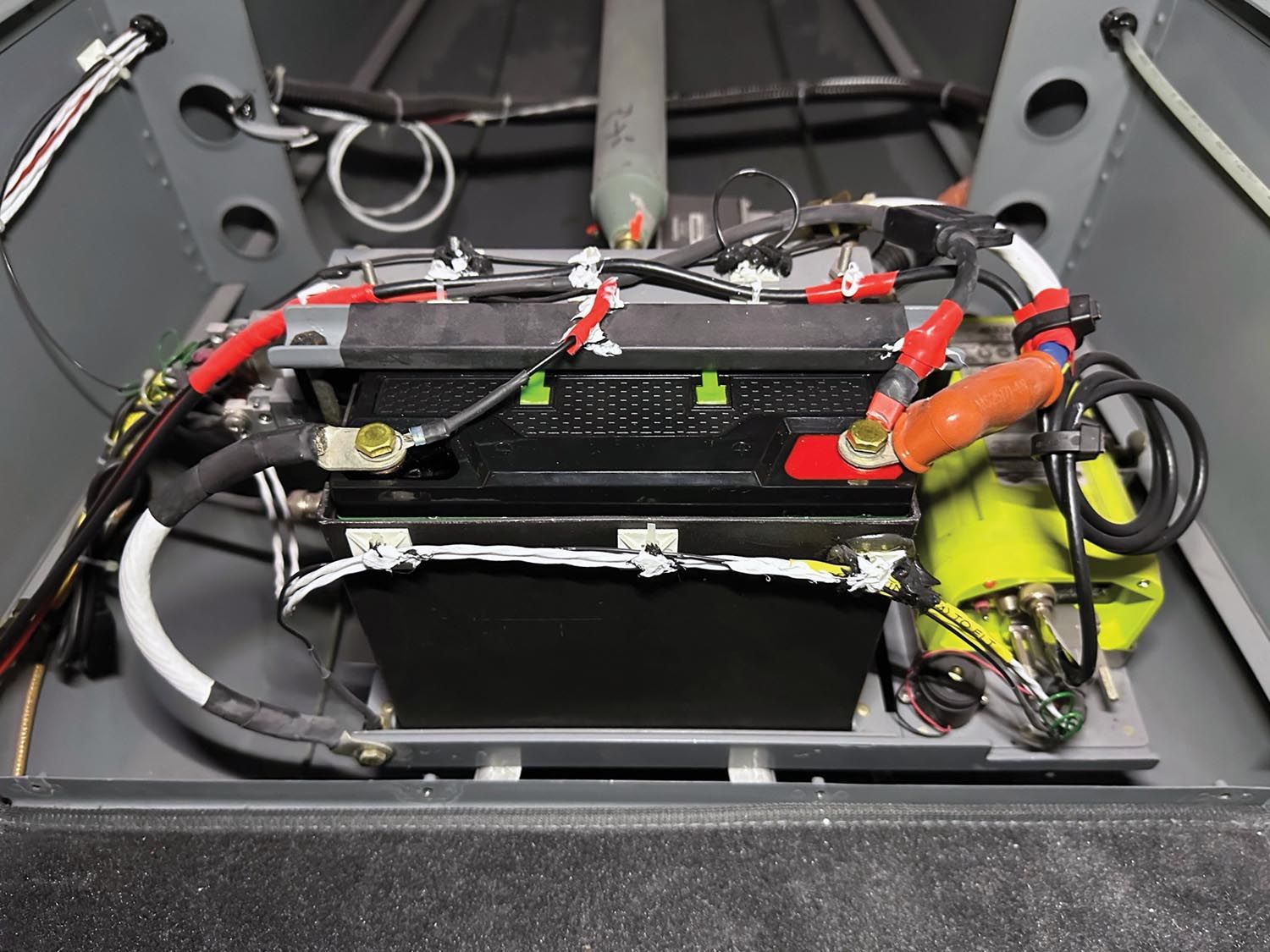
“My Aerolithium 980 battery has been very reliable and easily spins my IO-540 engine for quick starts,” said one survey respondent who flies local and cross-country flights a couple times per week.
Harris told us product support is important, offering customer service seven days a week. Someone in our survey vouched for it, saying: “Aerolithium has great customer service, even on weekends.”
The low-impedance 12-volt 680-Series batteries (available in 12- and 18-Ah and compact 7- and 12-Ah versions), according to Harris, are the most popular Aerolithium models for typical Experimental kits and are priced between $225 and $475, depending on the build. They’re intended to drop into common lead acid applications and are waterproof and shockproof tested to SAE and AS9100 standards. Options include an internal heater circuit, subzero supercapacitor for ops in freezing temps, an app for reviewing charge and discharge history, a tricolor LED status indicator and a key fob for what’s called the “second-start” or auto-jump option.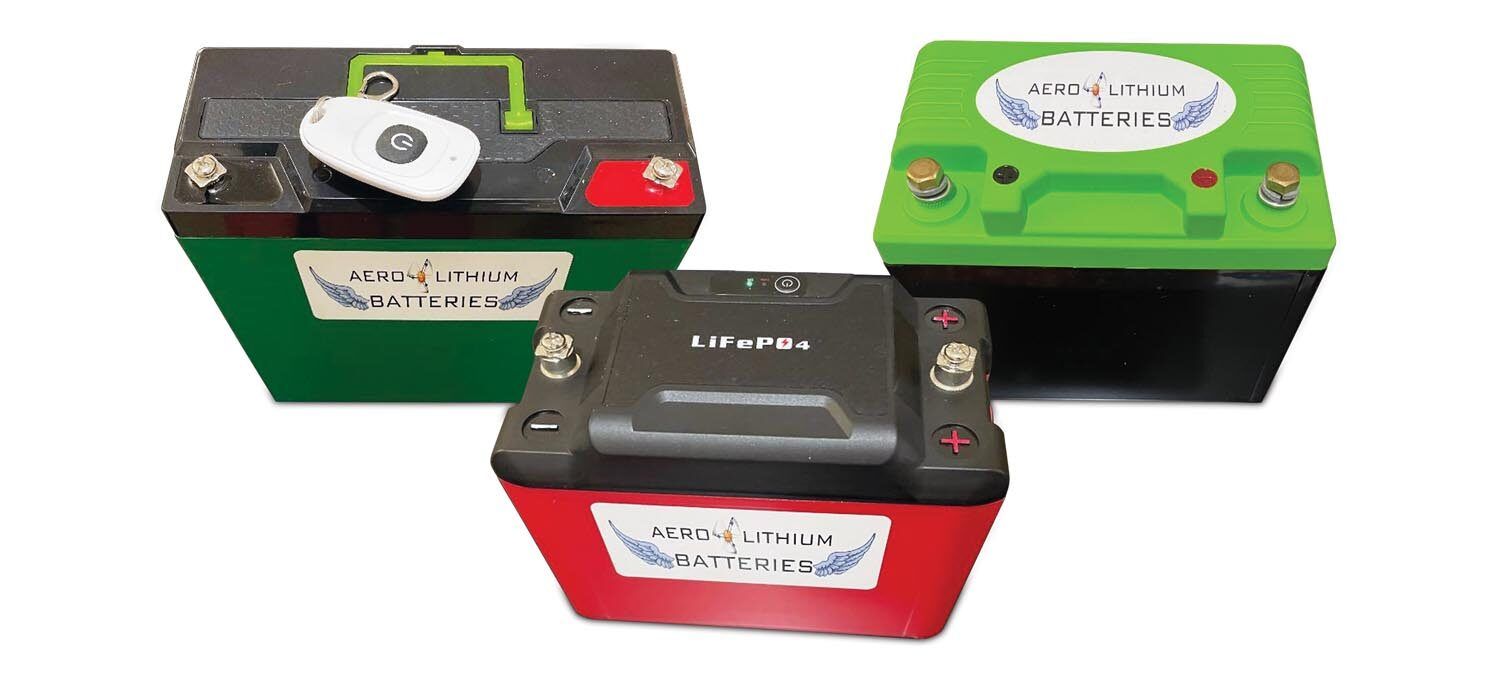
The auto-jump feature is essentially a lifeguard energy supply that enables the battery to reserve enough power to start the engine if the master is left on or something else drains it. Again, the smart BMS kicks in and stops any drain at a level higher than the normal low-voltage disconnect (LVD) or around 9.6 volts on a 12-volt battery. Press the key fob (or hardwired switch) and then start the engine within 60 seconds. Harris said that since the LVD is higher with the second-start option, he recommends a second backup battery. The option is only available on the regular-size Aero 680.
Aerolithium’s BMS capabilities vary depending on the type of battery a buyer wants. All BMSs have overcharge and overdischarge protection, over/undercurrent protection, over/undertemp protection, charge current limit protection, short-circuit protection and cell balancing. USA-built Aerolithiums are designed with a 2000-plus discharge cycle, and Harris noted that his batteries come standard with 8 AWG wire versus thinner 10 AWG wire found in others.
The company custom builds 28-volt batteries for turbines, plus lithium copies of legacy lead acid batteries from Concorde, Gill and Odyssey. Harris told us there’s a “12-volt model in the skunkworks that runs on a single cell providing 100% reliability and simplicity.”
“The Aerolithium battery’s capacity, storage, output current and charging current are all well controlled by the battery management system and far superior to the lead acid battery it replaced. I couldn’t be more pleased with Aerolithium,” said another respondent. He flies over 250 hours per year and parks in an unheated hangar.
For custom-build pricing and options, contact Aerolithium at www.aerolithium.com or 850-844-8987.
Concorde
California-based Concorde Battery Corporation is a recognizable name in the aircraft battery market, with roots stemming back to 1979 supplying its valve-regulated sealed lead acid (VRSLA) models to military, OEM and aftermarket customers. The Concorde RG line of absorbed glass mat (AGM) batteries is the core GA product and is manufactured in the USA. AGM batteries contain a special glass mat separator that wicks the electrolyte solution between the battery plates. The material enables the fiberglass to be saturated with electrolyte, storing the electrolyte in a suspended state instead of in a free liquid form.
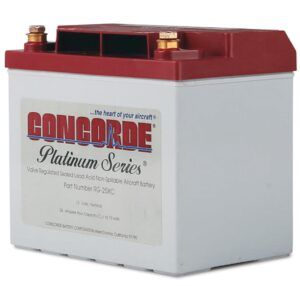
A flagship model is the maintenance-free 12-volt, 22-Ah RG-25XC, street-priced around $400. Spec’d at 350 CCA (cold cranking amps), it weighs 23.5 pounds and measures 7.5×4.9x 7.7 inches, has non-removable overpressure vent valves and ships fully charged and installation ready. The 12-volt RG-25 has 225 CCA and is street priced at around $350. Consider spending the extra bucks for the higher-CCA XC model. Describing it as a “real aircraft battery for LSAs,” the 13-pound RG-12LSA model has 200 CCA and is street priced around $370.
While Concorde has a good aircraft battery application utility on its website, it leaves out most if not all Experimental kits. Concorde batteries have FAA-PMA approval. Concorde provides a six-month or 300-hour (from date of first installation) full warranty. For batteries for piston engine aircraft, Concorde offers a prorated warranty based upon a pro-rata usage from 180 to 730 days (or 300 hours to 1200 hours). The pro-rata charge is calculated by determining the percentage of the useful service life of the battery prior to the failure. Do a capacity check before the end of the first six months in service.
As for Concord’s real-world performance, we heard good things about reliability and performance, but a crummy story about a Concorde warranty deal gone sour when “the distributor kept the warranty money instead of forwarding it to me,” a respondent answered. Still, he’d buy another Concorde and says using a temperature-controlled battery minder seems to be making a difference in longevity.
“I have used both Gill and Concorde batteries over the years. The Gills always lived a short life, while the Concordes have always been reliable for me,” said another respondent who stores the aircraft in an unheated hangar, doesn’t keep the battery on a tender and doesn’t service the batteries per the manufacturer’s instructions. He does, however, use external power when the master switch is on for avionics programming.
“My next most recent Concorde AGM 12-volt battery lasted almost 10 years—superb! But my most recent Concorde lasted less than three years—unsatisfactory. My A&P replaced it three months ago with another Concorde 12V AGM battery, so we’ll see,” said another respondent of his $500 RG35AXC Platinum series batteries, rated at 440 CCA. He flies it a few times per month, keeps it serviced per the instructions, stores it in an unheated hangar and keeps it on a battery tender.
“I have two aircraft batteries, both Concordes, and they seem to fail exactly on the warranty expiration date, which is 24 months,” a respondent said. He keeps them in a heated hangar, on a battery tender, services them per Concorde instructions, uses external power when fiddling with the avionics when the engine is off and monitors the charging system with a JPI engine display.
Another respondent dinged Concorde because the model he bought that was supposed to fit his battery box didn’t. “Would not take the battery back even though it didn’t fit under the cover,” he said, and ended up modifying the box to make it work.
Sister publication Aviation Consumer asked Concorde about bringing lithium-ion models to market, and while it plans to, it will be for limited applications. “When used for aircraft applications, which is a more severe environment, the service life may be significantly less. Given the possibility of short service life, it is hard to justify the higher price, especially with regards to replacement batteries and retrofitting aircraft,” a company spokesperson said in an interview. He also made a good point that since lithium-ion batteries are shipped as hazmat, this has to be factored into the price. While the popular Concorde brand did well in the satisfaction survey, we heard complaints about rising costs. Contact Concorde at www.concordebattery.com or 626-813-1234.
Teledyne Battery (Gill)
A longtime OEM battery provider, Gill was purchased by Teledyne Industries and rebranded the Gill line under Teledyne Battery Products. Do a search and you’ll find more than 55 Gill models for aviation applications, although the company’s web search leaves out Experimentals.
Street priced at around $300, The 12-volt, 300-CCA sealed model 7025-20 is advertised for “extreme cranking,” weighs 22.6 pounds and measures 7.5×4.9×7.7 inches. The 7025-20 is often advertised as a sealed lead acid upgrade to the popular 225 CCA wet-filled Gill G-25 lead acid model, priced around $250.
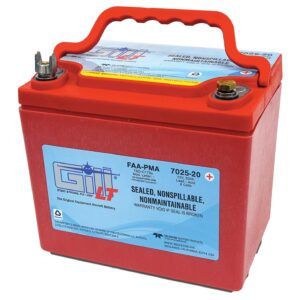
Speaking of wet-cell tech, one respondent made an observation after flying his Cessna over 10,000 hours: “Seems newer-model low-maintenance flooded lead acid batteries have a shorter life than they did 20 years ago. Modern permanent magnet starters tend to start IO-520 engines easier than earlier variants, so stress on the battery should be less,” he wrote.
TBP’s battery warranty requires that only Teledyne-manufactured electrolyte may be used in the battery. All models have to be registered within 30 days of installation, and dry-charged batteries must be installed within five years of the manufactured date and within 30 days of initial electrolyte addition. A warranty replacement battery is provided by an official TBP distributor or direct from TBP, limited to batteries that have been inspected and maintained in accordance with TBP’s applicable Component Maintenance Manual (CMM)—proof can be established by a maintenance log attached and/or logbook entries. Its flooded models are generally warrantied from nine to 15 months and sealed ones have prorated coverage from 12 to 24 months or 600 to 1200 hours.
“My Gills only lasts about two years, even with a quality battery minder on them all the time,” one respondent said. He seems to be doing everything right, including keeping them up per manufacturer’s instructions, using external power while on the ground and storing the plane inside, although the area isn’t heated.
“Teledyne/Gill insisted I do three deep discharge recovery cycle attempts, but that only got the battery back to 83% capacity,” a respondent reported. The battery is less than three years old; he keeps it on a battery tender, flies long-distance trips every couple of months and services it per the guidelines. “Gill sent a replacement battery that was as bad as the first one,” said another respondent.
We reached out to Teledyne Battery to learn more about the Gill line—and a chance to respond to some negative feedback the Gill brand got in our survey—but repeated phone calls and emails were unanswered. That’s disappointing, but we’ll certainly follow up if the company ever responds. Contact Gill at www.teledynebattery2.com or 909-793-3131.
Odyssey
A big player in the powersports market, Odyssey is popular for Experimental aircraft (sold through Aircraft Spruce and a number of parts suppliers). Odysseys are sealed AGM batteries with an eight-year (best-case) design life. Odyssey boasts it’s the only battery in its class that is capable of delivering a large number of deep cycles (up to 400 when fully discharged or up to 500 when discharged to 80%), plus it’s a good fit for aircraft since it’s specially designed for high-vibration applications. Need to store it? Odyssey says its batteries will maintain as much as 50% charge after sitting for two years at 77° F—and maybe longer when it’s cooler.
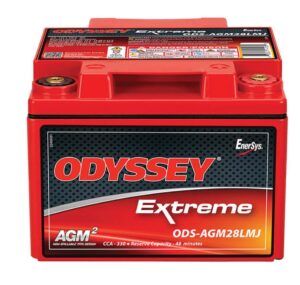
“Odyssey AGM batteries have an incredibly low self-discharge rate. I often do nothing to the battery, then start it after several months of sitting dormant, and it cranks right up, even in the Alaska winter,” said one respondent, who checked the box saying he would buy another Odyssey. On the other hand, when asked if he was satisfied with the outcome of a warranty situation, he said he wasn’t and that “the company was unhelpful.” When it comes to batteries, we think buying from a responsive distributor is a good plan. We heard positive feedback about working with Aircraft Spruce and Wicks Aircraft.
Advertised as having a three- to five-year service life, another said his two-year-old 170-CCA Odyssey PC680’s life expectancy was shorter than he expected, saying, “This is my second PC680 and the cells seem to deteriorate quickly.” He told us he flies it locally twice per month, stores it in an unheated hangar and doesn’t keep it tendered.
On the other hand, we heard of one Odyssey battery surviving the test of build time: “While building the aircraft, I bought the battery to provide dimensions for the battery box and mounting. During that time (several years), I regularly discharged the battery partially with the load of an LED landing light, then recharged the battery. I did this several times a year for three years. When the aircraft was finished, the Continental O-200 lit off before one complete revolution of the prop. Can’t expect any more from a battery than that!”
“Bulletproof—it works in any position and it’s relatively light,” one responder said of his Odyssey PC680 series. It’s eight years old, stored in an unheated hangar and isn’t connected to a battery tender; the pilot doesn’t use external power, but he does fly several times per week. We think that makes a difference.
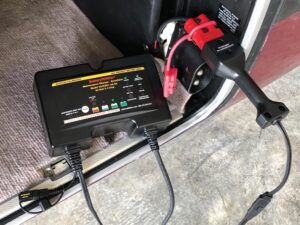
A popular Odyssey model is the 12-volt Extreme AGM16CL, street priced around $190. With 220 CCA, it weighs 12.2 pounds and measures 6.7×3.0x7.0 inches. Another is the AGM15L (street priced around $150), weighing 11.4 ounces and spec’d for 150 CCA. It works in tighter spaces, measuring 6.7×3.3×5.1 inches. Visit Odyssey at www.odysseybattery.com.
The Takeaway
No one can predict how long any ship’s battery will last, and no two applications are identical, especially when it comes to storage, climate and aircraft use. But we still think one of the best things you can do for any battery is keep it on an appropriate battery tender. “I currently have five Concorde batteries in four planes, and I typically get five to seven years when using battery tenders. Some have lasted 10 years,” one respondent said. We’ll look at battery tenders in a separate article.
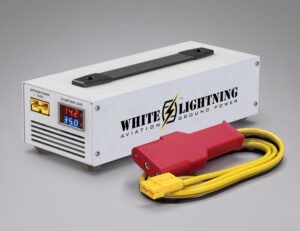
For certain, climate plays a big role. “The Florida heat has been brutal on all of my aircraft batteries, no matter the brand,” said one responder. “I’m based in Arizona, and it seems the heat is the death of most of my batteries. From July to September, the internal temperature of my hangar gets to 150° F. The battery, mounted in the tail baggage area, usually measures 120° F,” said another.
Last, pilots are good at flattening batteries, made easier by long periods of messing around with avionics programming. When possible, connect to external power and simply fly the aircraft as much as you can.
Photos: Larry Anglisano and courtesy of the manufacturers.










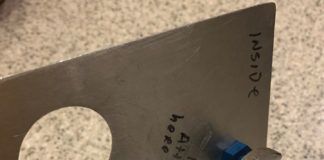
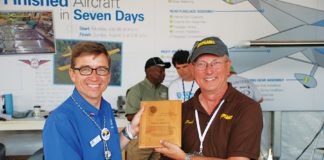
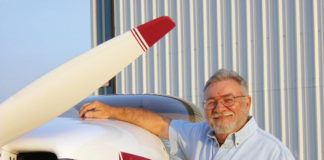

Larry,
Nice review of the available aircraft batteries and the user feedback.
I had hoped that you would have added a couple of notes;
– before buying a battery, review the aircraft engine starter cranking current requirements to be sure it has the CCA amps to spin the prop.reliably.;
A low compression O-320 with the original starter and the battery mounted close, on the fire wall, could use a 12 AH, 170 amp CCA, PC680.
But if it has a lightweight, high rpm starter, it will require a lot more amps to spin the prop.
An IO-360 with 10:1 pistons and a light weight composite prop could need 400-500 amps to spin it. So, better to use a Concorde RG35AXC, with 440 amp CCA.
– choose the battery cable gauge; a 2 GA may be ok for the firewall mounted PC680 and the O-320, with 3 ft of cable.
But if the battery is in the tail and there is 8 ft of cable, or it has to carry the 400 amps for that IO-360, then a #0 ga cable is needed.
– lastly, be sure that the voltage regulator is set to properly to recharge the battery; 14.2 – 14.5 volts for the RG35.
But a Lithium battery requires a different charge voltage. Check the manufacturer’s requirements.
Maybe you intend to review these items in parts 2 and 3…?
Good article. I switched to the EarthX, 3.8 lb battery in my Zenith CruZer with a Lycoming 0-320 engine. The ETX680 cranked my engine with no problem and this was a recent rebuild with new rings and lapped valves. I mounted the 680 in the rear fuselage and ran #0 cables. One comment I received on the initial run up was that they thought I could fly with just the starter turning the propeller. No problems.
A big thank you to Larry and Kitplanes! This is the best treatise on aircraft batteries I’ve seen in quite awhile. Those of us pondering a change in battery type appreciate the details on the lithium phosphate batteries and special features therein.
My certificated airplane has had a Gill and a couple of Concorde batteries in it. I still have the Gill sitting on my workbench. I use it to test 12 volt items from time to time.
The first Concorde lasted four years in a heated hangar. The airplane was flown once a week.
I wanted to install an EarthX in February of 2023, but the Mpls FSDO wouldn’t allow it. At the time, over 25 of these had been approved around the country in my make & model of airplane. Once again the FAA is here to help…
help us stay in the Dark Ages I guess!
This is one more reason to build your own airplane.
EarthX only has STCs for a limited number of certified aircraft.
see; https://earthxbatteries.com/list-of-stcs/
The unit certified for my Cessna only has 15 AH capacity vs the 24 AH of the Concorde I use. It’s only 18 lb lighter, so if I leave 3 gallons of avgas out, I’m the same weight.!!!
[ no thanks !!]
[pasted this from another Av page ]